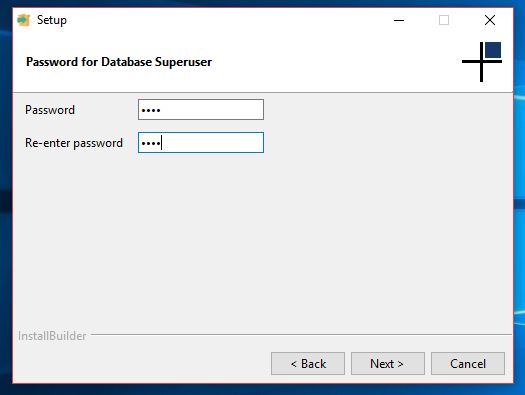

never use it for your standard/user applications.use the “postgres” database user solely for administration purposes.
#Postgres app default password password#
This command won’t leave any track of your password anywhere in the system or log. You will be asked to enter a password and confirm it. The default superuser is defined by the POSTGRESUSER. The simplest and safest way to add a password to the “postgres” user is to connect to the local server using “psql” (see steps #1 and #2 above), then type the “\password” meta command of psql. This environment variable sets the superuser password for PostgreSQL. These tools need to connect through the network and work as a standard client application.īy default, when you create a PostgreSQL cluster, password authentication for the database superuser (“postgres”) is disabled. However, a lot of our customers and students love graphical interfaces (especially if you come from databases with advanced tools in this area – I on the other hand am a console guy). connect to the local server using “psql” Create a PostgreSQL User and Password You can create a PostgreSQL user with a password using the following command.become the “postgres” system user (either via the root user, sudo or through SSH public key authentication).Set the password for the default user account When you create a new Cloud SQL instance, you must set a password for the default user account. Therefore, my favourite way of connecting is: See Set the password for the default user account. I personally use the “postgres” user just to manage global objects (roles, tablespaces, databases) and to perform regular administration duties. nothing changed.One of the most recurring questions I get from users that are starting their long and prosperous journey with PostgreSQL involves connecting with the “postgres” user. I've also tried to uninstall PostgreSQL 13, deleting the postgres user and re-download and re-install everything. Host replication all ::1/128 scram-sha-256

# Allow replication connections from localhost, by a user with the # "local" is for Unix domain socket connections only I've also tried to use the command line tool but end up encountering the same errors.įinally, this is how my pg_hba.conf looks like: # TYPE DATABASE USER ADDRESS METHOD I already tried to set the method to trust, restart the mac, and open pg Admin 4 that keeps asking me for the password to access the server. Login as a default user In almost all systems, the standard Postgres user is 'postgres' and they do not need a password at all for verification. In PostgreSQL 13 the authentication method is encrypted via scram-sha-256. I've also tried not to insert any password with the resulting error: I've already tried all the "default" passwords I managed to find on the internet but the error is always the same:įATAL: password authentication failed for user "postgres" Figure 1: a pgautofailover demo session in tmux. Specifically, it says: Please enter the password for the user 'postgres' to connect the server - "PostgreSQL 13". To connect your application to the Postgres instances in the pgautofailover docker container, you can either play with the usual docker network ports settings and expose the ports to the outside of the container, or maybe even go fancy and use docker-compose instead. By Default, the user is postgres and the password is the one which you enter while installing the database.
#Postgres app default password full#
Immediately after installation, there should be a user named 'postgres' with no password that has full administrative privileges - try logging in with those credentials (and change the password to something secure ASAP). The default when loading a shape file is to use the database numeric type, which is. I downloaded PostgreSQL 13 with pg Admin 4 and when I open it for the first time after installation it asks me for the master password that I was asked to set during installation, after I give the master password and this gets accepted I try to connect to the default server created during the installation: "PostgreSQL 13".Īt this point, it asks me for a password for the user "postgres" that I don't know where to find. By default, that user is internal to your PostgreSQL instance and has nothing to do with any OS X user. If you installed Postgres.app, then you will find ogr2ogr in the. I know that this question has been asked other times but I didn't find a solution to this problem!


 0 kommentar(er)
0 kommentar(er)
